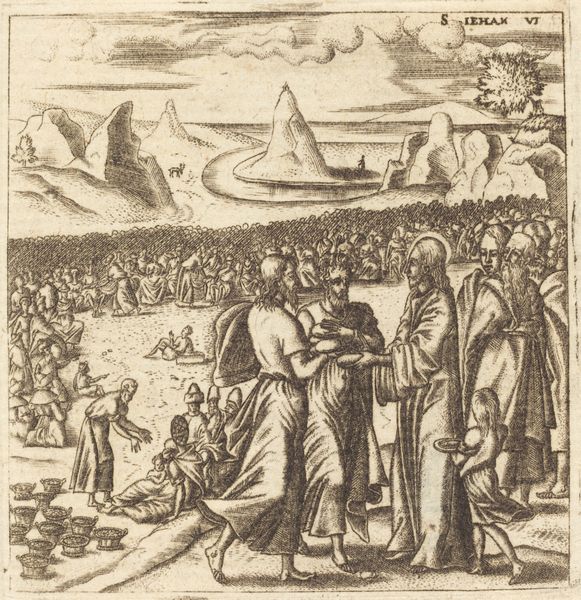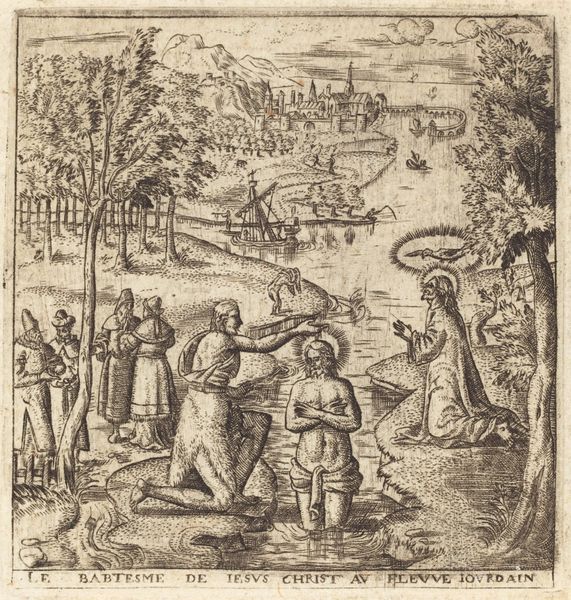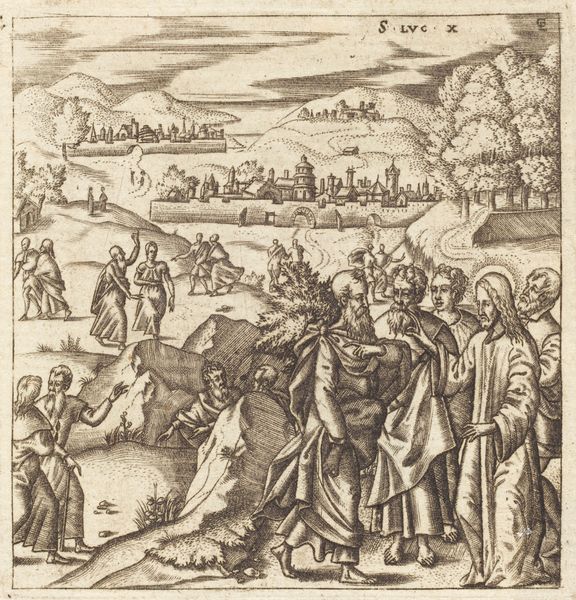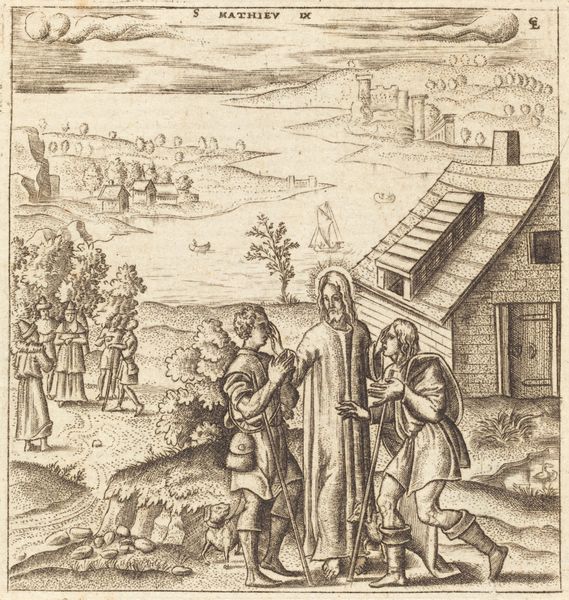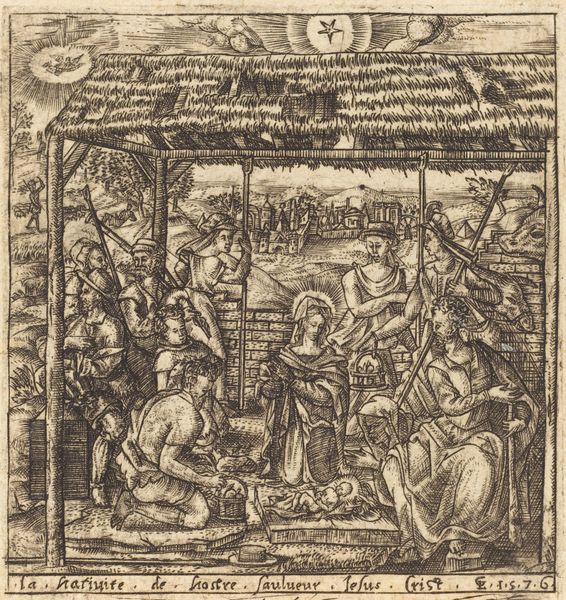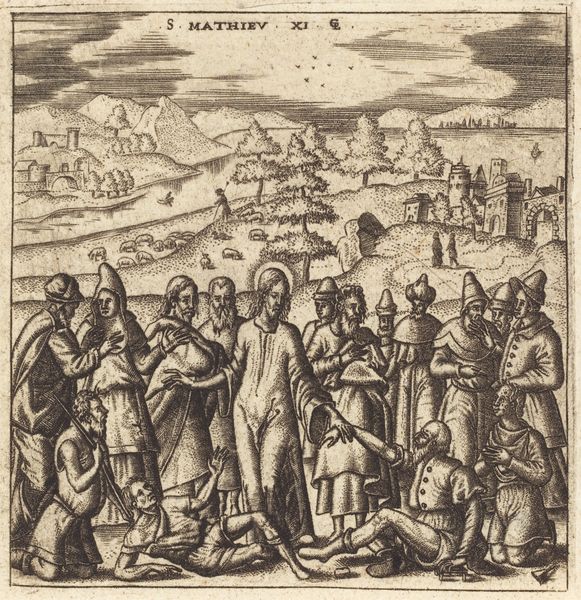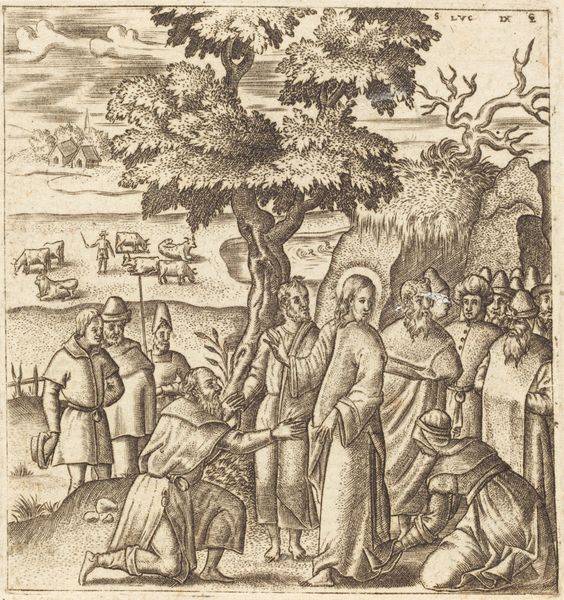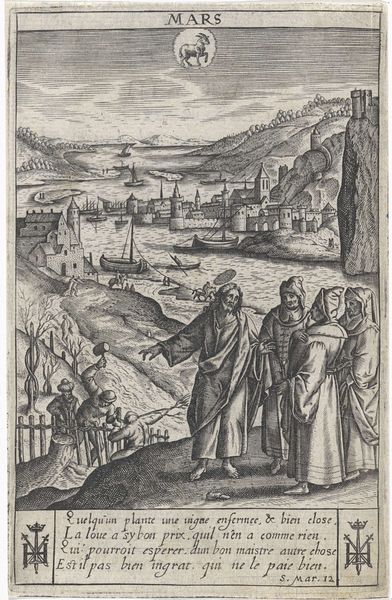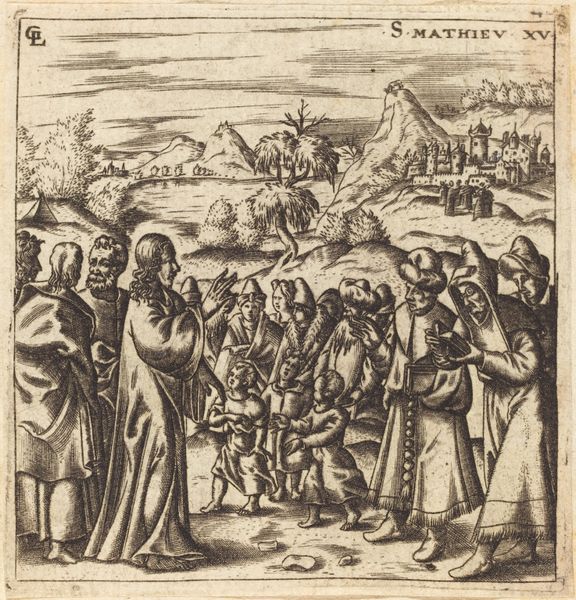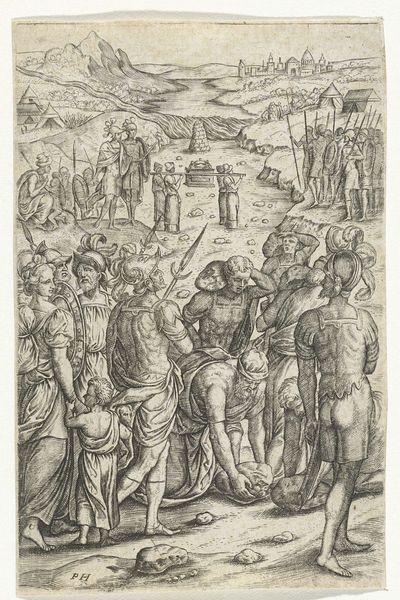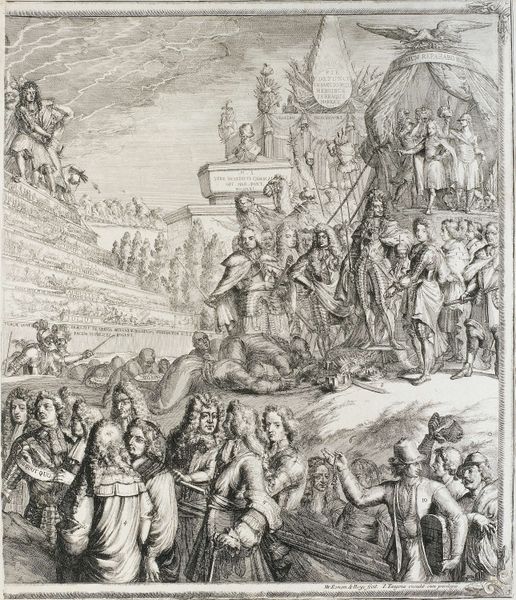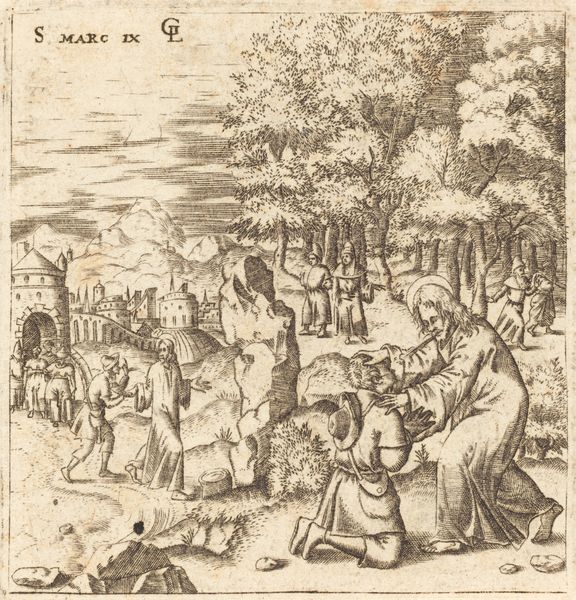
print, engraving
# print
#
landscape
#
mannerism
#
figuration
#
line
#
history-painting
#
engraving
Copyright: National Gallery of Art: CC0 1.0
Editor: Here we have Léonard Gaultier’s engraving, "Christ Heals the Sick," created sometime between 1576 and 1580. I'm struck by how the landscape overwhelms the figures. It feels almost… staged, like a play. What aspects jump out to you? Curator: The landscape isn't mere backdrop. Notice the *process* – the labour – embedded in the engraving itself. The repetitive, controlled lines create a mass-producible image. How might this impact its message? Think about the availability of religious imagery for different social classes. Editor: So, you're suggesting that the medium itself is part of the message? The fact that it’s a print meant it was more accessible? Curator: Precisely. And look at the foreground. It seems to depict work being done in both agriculture and ministry. How might Gaultier be blurring the lines between these different types of work through material means? What expectations might viewers have, then and now? Editor: I hadn't considered that! It seems to place spiritual labour right alongside physical labor, highlighting its tangible effects. Do you think he was commenting on the Church's role in society, maybe even commenting on corruption or fair labor? Curator: Perhaps. Consider the Mannerist style; those elongated figures are a sign of the art-making processes valued at the time, yet the landscape hints at something beyond that—something outside the main scene, perhaps involving agriculture. And note what labor must have been like then and the intended purpose or value of that labor. That should help answer what the artwork conveys to us. How does that material reality shape its meaning? Editor: It's amazing to think how much of the meaning comes from simply understanding how it was made and for whom! I was too focused on the 'Christ' element and missed that completely! Curator: It's about examining the full production chain, right? And that allows us a different view on art historical narratives.
Comments
No comments
Be the first to comment and join the conversation on the ultimate creative platform.
